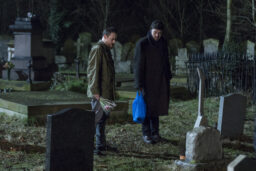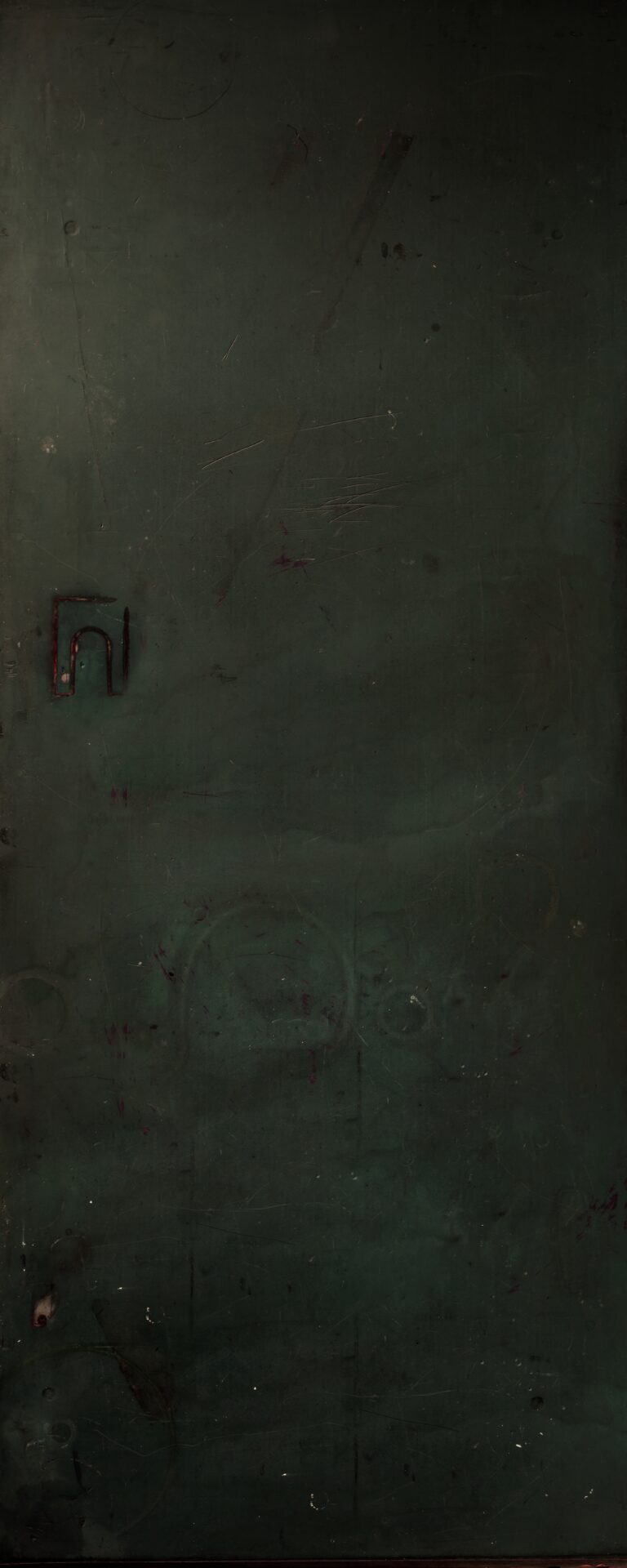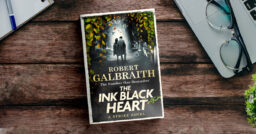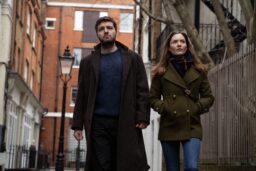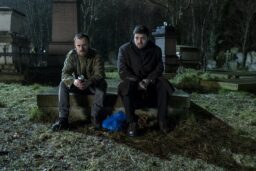Highgate Cemetery
The cover of the latest Robert Galbraith book, The Ink Black Heart, has just been revealed. Framed by leaves tinged with autumn, the familiar silhouettes of Robin Ellacott and Cormoran Strike walk among the graves of London’s famous Highgate Cemetery.
The investigation begins when Robin Ellacott receives a visit from Edie Ledwell, creator of a hugely popular online animation – The Ink Black Heart – who’s increasingly worried about harassment from a mysterious online figure. A few days later Edie’s body is discovered in Highgate Cemetery, the very place that inspired The Ink Black Heart.
Highgate Cemetery is full of stories, and while we wait to find out where Robin and Cormoran’s will lead them, lets find out more about the cemetery itself…
Highgate Cemetery opened in 1839 and consists of two cemeteries the West and East, which flank Swain’s Lane in north London. For a while it was the most fashionable burial ground in the city and filled with grand monuments to the greats of Victorian society. It fell out of fashion in the first half of the twentieth century, and for many years nature took over the old burial ground, converting the cemetery into a woodland with ivy hiding many of the old graves. In the mid seventies a charity, The Friends of Highgate Cemetery, was set up to preserve and restore the cemetery and it is now a grade I park and many of the memorials are listed monuments. Burials still take place there and in 2011 the efforts of the charity meant the original chapel was restored and opened again for funerals. It is well worth visiting in person. The delicate state of many of the monuments mean that you can only visit the West Cemetery as part of a tour, while the East Cemetery is open to explore freely, but an entrance fee is charged.
The Egyptian Avenue and Cedar Circle
West Cemetery
The Egyptian Avenue, entered through an arch flanked by obelisks topped with lotus flowers, housed the dead of some of London’s richest families and reflects the passion for all things Egyptian in the period. The avenue is lined with huge metal doors facing each other, each of which houses a family mausoleum with space for twelve in each. The entry arch is built of brick and faced with Portland cement, which looked as lovely as the creamy Portland stone which covers the National Gallery when it was first constructed, but hasn’t aged as well. The avenue leads to the Cedar Circle with a further twenty vaults. The Cedar which gave the central circle its name, never really recovered from having the circle built around it. It was, with great sadness, carefully felled in 2019, but a new tree has been planted in its place. Sections of the film, Fantastic Beasts: The Crimes of Grindelwald, were filmed here, with Highgate standing in for Père Lachaise Cemetery in Paris.
The Highgate Vampire
The cemetery has been the setting for other stories of magicians and monsters. Once the cemetery fell into disuse and became overgrown, various ghost stories began to accrue around it. In the late 1960s and early seventies, rumours circulated about a strange grey figure, seven foot high with red eyes. Claims were made that this figure was feeding on small animals in the cemetery, leaving puncture wounds in their necks, and it was in fact a King Vampire bought to this country many centuries ago. According to the story modern magicians and occultists were trying to resurrect it. The cemetery became a focus for vampire hunters who claimed to discover a lot of evidence of occult ritual activity, and the police were kept busy defending the graves from determined ghost hunters, exorcists and some grisly acts of vandalism until the friends took over the cemetery and secured the site.
The Real Ophelia
West Cemetery
When we think of Shakespeare’s tragic heroine, Ophelia, we often think of the painting of her floating among the flowers as painted by John Everett Millais. Highgate is the final resting place of Elizabeth Siddal, muse of the pre-Raphaelites and model for that masterpiece. Lizzie had to pose day after day lying in a bathtub as Millais painted her for this iconic, unsettling image and ended up catching pneumonia when the lamps used to warm the bath water went out and Millais, engrossed in his work, didn’t notice. Millais agreed to pay her medical bills. An artist and poet herself, she married Gabrielle Dante Rossetti in 1860 but died tragically young just two years later. She was buried in the Rossetti family plot. Her husband had her body disinterred some years later to retrieve an hand written book of poems he had placed in her coffin.
A Lion, Who Isn’t a Lion
West Cemetery
Lion, whose statue guards the grave of Victorian pugilist Tom Sayers, is in fact a dog. He is immortalised, lying patiently with his head on his paws on his master’s tomb. Sayer’s final fight with American John C. Heenan was a marathon attended by several MPs in spite of the fact such fights were illegal at the time and ended in a controversial draw. Sayers became a champion to the people of London and retired after a public subscription raised enough money for him to be able to leave the ring. Lion was the chief mourner at Sayer’s funeral, travelling in his own pony cart, which was watched by many thousands of well-wishers, fans and friends who accompanied the hearse from Camden.
Karl Marx, Father of Communism
East Cemetery
The funeral of one of Highgate’s most famous residents, Karl Marx, actually attracted only a handful of mourners. Since his death however, his monument has attracted huge numbers of pilgrims to Highgate Cemetery and some controversy. The monument features a huge bust of the man himself, and the message, workers of all lands unite. Those are the last words of the communist manifesto which Marx wrote with Friedrich Engels in 1848. Attempts were made twice to blow the monument up in the 1970s, and 24 hour CCTV surveillance has been installed to deter vandals. The mother of the British Caribbean Carnival and black civil rights leader, Claudia Jones, to whom Marx was a hero, is buried nearby.
George Elliot
East Cemetery
Some of the graves in Highgate attract particular offerings. The grave of George Eliot, who wrote Middlemarch and Silas Marner, is regularly found rustling with pens offered by admirers. Eliot, whose real name was Mary Ann Evans, is buried next to her common law husband George Henry Lewes, with who she lived, to the dismay of respectable victorian society, unmarried for more than twenty years.
Angels
West Cemetery
There are many carved angels guarding the graves in Highgate in all weathers, but one of the finest is shielded from sun and storm. You can find this angel in the Beer family mausoleum in the West Cemetery. Take note of the beautiful mosaic and gold leaf dome, and the touching memorial to Ada, daughter of Julius Beer, who died aged eight. She is shown being embraced by an angel on a marble relief by Henry Hugh Armstead above her father’s tomb.
Wildlife
West Cemetery
The cemetery is full of self-seeded ash, brush, wild flowers and deep thickets of ivy which has made it a haven for wildlife in the city. The Friends of Highgate tread a careful line, keeping the accidental magic of the cemetery which nature has created, while preserving as many of the monuments as they can. Watch for foxes, butterflies and songbirds thriving among the graves during the day. At night the colonies of bats take over.
Other Treasures
East Cemetery
Many monuments in Highgate are art works worthy of any gallery and some mark the graves of more recent luminaries. In the East Cemetery keep an eye out for the bookshelf stacked with ancient volumes which marks the grave of Jeremy Beadle, TV presenter and collector. Look out too for the unusual monument to artist and printmaker Patrick Caulfield too, with the word ‘dead’ cut through the six-foot slab of granite. And punk hero Malcom McLaren’s dramatic monument includes his death mask.
Highgate is a place of wild beauty, Victorian melancholy, occasional surprises and accidental discoveries. The overgrown pathways and faces of angels appearing round corners gives the sense that even so near to central London you are both out in the country and being watched by the living and the dead. It’s a place of rich history, scandal and mystery, celebrity, hidden secrets and sudden splendours. A perfect place for Robin and Cormoran’s next investigation to begin.
